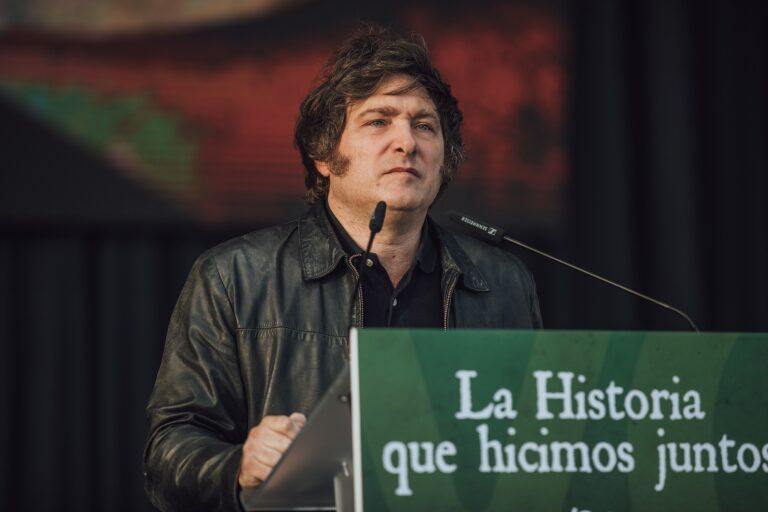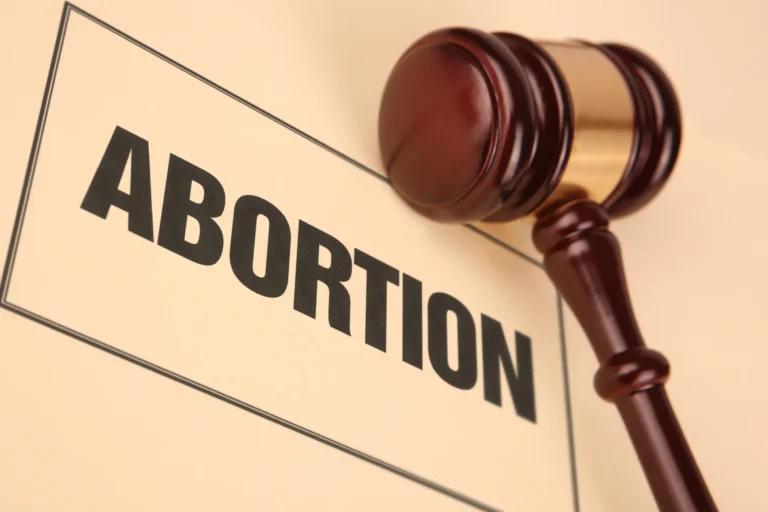The economic principles of the “Third Way” offer a pathway between the extremes of capitalism and socialism. They are the essential elements of a “Declaration of Social Development through Personal Empowerment” published by the Population Research Institute and the Center for Economic and Social Justice. The Declaration, which includes a program of action (not included here), is a response to the United Nations Draft Document on Social Development. The Declaration, in its entirety, will be provided on request to those interested. The United Nations draft document, to which the Declaration responds, has been prepared for the World Summit on Social Development to be held in Copenhagen, 5–13 March 1994.
The Population Research Institute shares with The Center for Economic and Social Justice (CESJ), a “common vision” of a “world which enhances the dignity, sovereignty and empowerment of every person” within human institutions. CESJ seeks the “solution to economic injustice … by lifting barriers, to make owners out of the non-owners. Economic justice demands real economic democracy — empowering each person with the means and opportunity to acquire and enjoy the full rights, rewards and responsibilities of productive capital ownership.”
The problem of social development
i. People everywhere are becoming increasingly aware that the gap is widening between the rich and the poor nations of the world. This gap is also widening between the rich and the poor within all nations of the world. This gap and the underlying causes of this gap are now appropriately being addressed by the various drafts of the United Nations Document on Social Development.
ii. People everywhere are interested in what constitutes authentic, tangible and sustainable development. This revised draft of the U.N. Document on Social Development begins with the premise that “Social Development” consists in the advancement and the empowerment of the entire person — and of all persons — economically, socially, politically, culturally, intellectually and spiritually.
iii. The question remains, what must be done to promote real development? Given that 1994 has been called “the Year of the Family” in recognition that the family is the fundamental unit of any society, what can be done to strengthen the families and family life in all nations? By addressing these questions, we can begin to understand better the linkage between the population issue and development.
iv. Conventional approaches to social development, as reflected in all earlier drafts, are based on either the world-view of socialism, that of capitalism, or some unstable mixture of these two approaches. But is there an alternative to the wage and welfare systems of capitalism and socialism — a true Third Way?
Social development from the perspective of the Third Way
v. Both socialism and capitalism concentrate economic power at the top. This strips the average citizen of most, if not all of his economic independence. To the disenfranchised citizen, it makes little difference that under capitalism the concentration is in private hands and under socialism the concentration is in the hands of the state.
vi. Both systems are excessively materialistic in their basic principles and overall vision. Both, in their own ways, degrade the individual worker. Both bring forth economic systems which not only ignore, but hinder, intellectual and spiritual development.
vii. Amalgams of the two systems, as in America’s so-called “mixed economy” or the Scandinavian Welfare State model, differ only in their degree of social injustice, corruption, economic inefficiency, human insecurity and alienation which permeates each level of class — divided societies. What then would be the true “Third Way” for moving toward a freer, more just and economically classless society?
viii. Most of the schemes sold by Western experts do not approach the problem of transforming socialist, state-controlled economies from the logical framework of a Third Way, and thus repeat the mistakes of the past. One such proposal was touted as a kind of “Marshall Plan” for the former Soviet Union. It was geared toward pumping an estimated $30–$100 billion of foreign money each year into the transforming economy of the CIS, promoting a public-sector wage system that would ensure every worker a wage packet in return for his labor.
ix. Another plan, coming out of Liberal American Academia, advocated a capitalist brand of state socialism, where confiscatory progressive in-come taxes would “rob from the rich and give to the poor,” thus ensuring a handout for every citizen on the dole, regardless of his efforts or the demands of justice.
x. Each of these approaches commits a fatal error. The “Marshall Plan Redux” implicitly limits the ownership of productive assets to a tiny elite of wealth accumulators — the nomenklatura of the old order, or faceless foreign owners of capital. Such a plan ensures that most, if not all, workers receive income only from selling their labor, in direct competition with advancing technology and an expanding global work force.
xi. This ultimately reduces the worker merely to one more productive resource disconnected from ownership rights in the labor-saving technology which accounts for most of the world’s economic growth. The economically disenfranchised worker can then be purchased for as low a price as possible, and forced into unemployment whenever the owners decide to relocate their plants to places where labor rates are cheaper, or to replace people with machines. This approach also turns the country receiving such aid into a giant drug-addict, dependent upon regular infusions of foreign capital to keep the economy staggering forward.
xii. Capitalism and socialism, as they have operated historically, violate traditional moral rights that owners of productive property have in the fruits of production. This is done by treating property incomes as “unearned” and even “stolen from workers.” Thus the state morally justifies its intervention into the economy, taking from owners any “excess” income and redistributing it among non-productive non-owners, to whatever extent the redistributors think necessary to maintain social order. Such redistribution, unfortunately, tends to increase social conflict and leaves more economic power in the hands of the state than is healthy for achieving genuine social and economic justice for the many, not just the few. However, simply saying that capitalism and socialism have violated the rights of owners of productive property says nothing until property itself is defined.
Property
xiii. Many people erroneously equate property with material objects, such as land, structures, machines, tools, things. In law, however, property is not the thing owned but rather the relationships an “owner” justly acquires (as a result of access to credit or previous creative activity) with respect to things. Private property is a set of rights, powers and privileges that an individual enjoys in his relationship to things. Under the law, these include the rights of possessing, excluding others, disposing or transferring, using, enjoying the fruits, profits, product or increase, and of destroying or injuring, if the owner so desires. These rights are only as effective as the laws which provide for their enforcement.
xiv. English common law, adopted into the fabric of American law, recognizes that the rights of property are subject to limitations that: things owned may not be so used as to injure others or the property of others, and that they may not be used in ways contrary to the general welfare of the people as a whole. As a functional matter and in the final analysis, property in everyday life is the right of control.
xv. Next to the state itself, the corporation is one of civilization’s greatest social inventions. In the modern world, the most important instrument for organizing private property rights in the means of production takes the form of corporate equity, represented by shares of common stock. These shares allow many owners to share individually and “jointly,” not collectively, in the ownership, risks and profits of a modern corporation. The corporation in turn is a convenient legal vehicle which owns “collectively” the land, machines and other assets it needs to produce and market goods and services in the global marketplace. While individuals may own shares in a corporation, no shareholder has any legal title to the machinery or other assets owned by the corporation itself.
xvi. Joint or share ownership provides each shareholder his own definable private property stake in the corporation, and thus decentralizes economic power. In contrast, collective ownership of an enterprise offers no definable stake for individual owners, and thus concentrates power in whoever controls the collective.
xvii. Property in the means of production is the primary social “link” between a particular human being the owner, partner or shareholder — and the process of producing and distributing wealth. Property determines who has the right to share in profits (the “wages of ownership”), as well as the ultimate risks and responsibilities of ownership. Assuming that economic values are set democratically and freely in a competitive marketplace, and unjust barriers to participation in work and ownership are lifted, property incomes are the key to distributive justice. As declared by the late Salvador Araneta, a scholar and university president, a lawyer and a business statesman, a political scientist whose theoretical knowledge was sharpened by two stints as delegate to both the 1935 and the 1973 Constitutional Conventions of the Republic of the Philippines:
For America and the Philippines to become bastions of true democracy, they must correct, not the effects of the capitalist system, but its very fundamental defect. Capitalism is for, by, and of a few people. It is not economic democracy. Daniel Webster, in the Massachusetts Convention, had said: ‘Power naturally and necessarily follows Property.’ And Benjamin Leigh, in the Virginia Convention, made a more forceful statement: ‘Power and Property can be separated for a time by force or fraud — but divorced, never. For as soon as the pang of separation is felt…Property will purchase Power, or Power will take over Property’ (Bayanikasan, The Effective Democracy For All, AIA Press, Manila, Philippines, 1976, 57–58).
Thus, real political democracy cannot exist without economic democracy.
xviii. This understanding of power is acknowledged in Article 17(l) of the United Nations Declaration of Human Rights, with the statement, “Everyone has the right to own property, individually as well as in association with others.”
This emphasis on the inalienable rights of humanity is even more forcefully stated in section one of the Virginia Declaration of Rights, written 15 May 1776 by the father of the American Bill of Rights, George Mason:
That all men are by nature equally free and independent and have certain inherent rights, of which, when they enter into a state of society, they cannot, by any compact, deprive or divest their posterity; namely, the enjoyment of life and liberty, with the means of acquiring and possessing property, and pursuing and obtaining happiness and safety.
xix. This emphasis is not reflected in the draft document on social development issued by the U.N., and represents a major weakness of that document. Other weaknesses include: an overreliance on the mechanism of the state to bring about social development instead of simply acting as the agent to remove barriers to full participation in the common good by all; reliance on artificial job stimulation and creation to achieve a secure and adequate family income, which approach impedes genuine social development and creates an enslaving dependency status on the part of the job holder; and a failure to respond adequately to the question of individual and family sovereignty and power, both economic and political, as opposed to that of the state.
Fundamental human rights
xx. There are elements of individual and general human dignity, power and sovereignty that must be taken into account when discussing a program of social development. There must be an emphasis on persuasion and protection of basic rights as opposed to coercion of individuals and families by the state in order to bring about change. A reliance on the public sector must be de-emphasized, with the private sector favored as the primary vehicle for social and economic development. Rather than a restriction of the rich and pulling them down to the level of the poor, the greatest efforts must be made to ensure that the poor have the opportunity to participate in the rights currently enjoyed only by the rich, not in restricting the exercise of rights by the rich. There must be an essentially new system of wealth distribution, not a system of wealth redistribution through the mechanism of the state, which should, ideally, own nothing. It must be recognized that government is the servant, not the master of the people.
xxi. A cornerstone of an acceptable social order is justice. It is through the functioning of justice that all people gain access to the goods of society (such as education, social, economic and political activities, and expressions of cultural diversity), participate in the common good, maintain human dignity and protect basic human rights.
xxii. While a just social order is of primary importance, there has been little or no recognition of what justice is. Often confused with the lowest and most basic form of charity, almsgiving, justice must be clearly defined before any agreement can be reached as to the nature of the just social order that is required. Justice is the mandate to give everyone his due. Aristotle in his Ethics divided justice into two parts: Commutative justice and distributive justice. The first deals with exchanges of equal or equivalent value between individuals or groups of individuals. The second deals with a distribution or division of something among various people interacting together in shares proportionate to what each one deserves. These virtues have an impact directly on the behavior of individuals, not institutions.
xxiii. It has been pointed out that “social virtues” are separate but complementary to the “individual virtues.” While individual virtues describe the moral quality of our individual actions, social virtues describe the moral quality of our institutions. For example, individuals may act justly within unjust institutions, and vice versa. Thus, “social justice” focuses on human institutions and the principles of justice which guide their formation, development, and restructuring. Social institutions affect the behavior of individuals but they are not human beings themselves.
xxiv. Social justice is the broader concept and encompasses economic justice. Social justice is the virtue which guides humanity in creating those organized human interactions called institutions. In turn, social institutions, when justly organized, provide the individual with access to what is good for the person, both individually and in associations with others. Social justice also imposes on each individual a personal responsibility to work with others to design and continually perfect institutions as tools for personal and social development.
xxv. Economic justice, which touches the individual person as well as the social order, encompasses the moral principles which guide humanity in designing economic institutions. These institutions determine how each person earns a living, enters into contracts, exchanges goods and services with others and otherwise produces an independent material foundation for his or her economic sustenance. The ultimate purpose of economic justice is to free each person to engage creatively in the unlimited work beyond economics, that of the mind and the spirit.
xxvi. Justice is not satisfied by having the state or supranational organization confiscate the surpluses of the wealthy, whether of nations or of individuals, for redistribution among the poor. This confuses justice with charity. No one should be due a decent standard of living from the state. In cases of emergency and dire necessity the state may make a redistribution out of the surpluses held by the wealthy if the wealthy have not already done so on their own individually, but to collect and redistribute anything more than a bare subsistence is unjust, as is permanently embodying redistribution as the basic economic mechanism by which people gain their incomes.
xxvii. Providing for those who are unable to hold a wage-system job for reasons such as age, disability or incompetence can be done through the mechanism of an independent non-governmental trust. Family members, court-appointed representatives or financial institutions can serve as trustees for those who are unable to perform labor, and act as agents for the beneficiary of the trust so that productive assets can be acquired and income generated so that anyone can become financially independent and free from dependence on the social services provided by the state, thus allowing full participation, even if by proxy, in the common good.
xxviii. Humanity is not engaged in a search for an amorphous “common good,” but can participate in a specific thing. Every higher institution depends on all those below it for its effectiveness, and every lower institution depends on those above it for its effectiveness; and every lower institution depends on those above it for its own proper place in the common good. It is precisely this whole vast network of institutions which is the common good, on which everyone depends for the realization of individual personal perfection, of a personal good. The common good is something which each person possesses in its entirety, like light, or life itself. When the common good is badly organized, when society is socially unjust, then it is each individual’s own share of personal perfection which is limited, or which is withheld entirely. As the common good consists of that whole vast complex of institutions, from the simplest natural medium of a child’s life, to the United Nations itself, each of these institutions from the lowest and most fleeting natural medium to the highest and most fleeting natural medium to the highest and most enduring organization of nations is the common good at that particular level. Therefore everyone, from the smallest and weakest child to the most powerful ruler in the world, can have direct care of the common good at a personal level. The common good can be directly attained through the mechanism of participative justice.
xxix. Commutative and distributive justice deal with what is due to a person on an individual basis. Participative justice deals with justice on a social or institutional level. It is concerned with what the individual has the opportunity and means to acquire at the present and in the future while acting within a particular institution. Participative justice can be viewed as the social justice aspect of the individual virtue of distributive justice, laying the groundwork for the unrestricted functioning of distributive justice on a social basis within the common good. No discussion of distributive justice makes sense without mentioning participative justice, since genuine distributive justice must always follow participative justice.
xxx. Justice is satisfied by removing barriers to participation in the common good. These barriers would include social, legal, cultural and institutional forms and structures that selectively deny rights to individuals or groups. Since part of the common good is the right to own productive assets in order to generate a living income, “participative justice” involves guaranteeing access to the means to acquire and maintain those assets. This means everyone has the right to use capital credit to purchase self-liquidating assets, as well as to retain ownership of those assets once they have been acquired.
xxxi. A wage system orientation ignores one or more of the minimum essential principles for building a more just economy. Leaving out any one of these “four pillars” weakens the entire structure of the economy and leads to eventual collapse of any Society. The four pillars of a genuinely economically, and thus politically just society consist of:
-
Expanded Ownership of Productive Assets
-
Limited Economic Power for the State
-
The Restoration of Free And Open Markets
-
The Restoration of Private Property
Pillar one of an economically just society: Expand capital ownership
xxxii. The goal of a program of expanded capital ownership is to promote widespread citizen access to capital ownership, creating new wealth accumulations for the many without taking existing accumulations of wealth from the few currently rich. This is achieved through the democratization of productive credit, which is used for financing growth through ownership-expanding mechanisms, institutions, and laws.
xxxiii. Expanded capital ownership decentralizes economic power and extends profit sharing to each citizen as the principal means of securing fundamental human and political rights, and as the ultimate check against the potential abuse of power by the state or by the majority against minorities.
Pillar two of an economically just society: Limited economic power of the state
xxxiv. Limiting the economic power of the state ultimately involves the goal of shifting ownership and control over production and income distribution from the public to the private sector, from the state to the people. In order to shift primary power over the economy from the state to the citizens themselves, the economic power of the state should be specifically limited to:
-
Encouraging growth and technological innovation, and noticing abuses within the private sector;
-
Ending economic monopolies and special privileges;
-
Lifting barriers to equal ownership and profit sharing opportunities, especially using its monetary powers to provide widespread access to productive or capital credit;
-
Protecting property, enforcing contracts and settling disputes;
-
Preventing inflation and providing a stable currency;
-
Promoting democratic unions to bargain over worker and ownership rights;
-
Protecting the environment and conserving non-replenishable resources; and
-
Providing social safety nets for human emergencies.
xxxv. Within these limits the state would promote economic justice for all citizens. Coincident with this objective would be the goal of reducing human conflict and increasing total revenues for legitimate public sector purposes, thus reducing the need for income redistribution through confiscatory income taxes and social welfare payments.
Pillar three of an economically just society: Restoration of free and open markets
xxxvi. The goal of the establishment and maintenance of free and open markets is to restore free and open markets for determining just prices, just wages, and just profits. This is done by gradually eliminating all state subsidies, barriers to free trade and free labor, price and wage controls, and all non-voluntary, state-controlled or collectivist methods of determining prices, wages and profits.
xxxvii. The result of genuinely free and open markets is to decentralize economic choice and empower each person as a consumer, a worker and an owner.
Pillar four of an economically just society: Restoration of private property
xxxviii. Through the reform of laws which deny shareholders the original rights to participate in control and receive all profits proportionate to their property stakes, personal rights of property in the means of production are restored, particularly in corporate equity.
xxxix. The result of the restoration of private property is to secure personal choices and economic self-determination. It re-establishes the economic equivalent of the ballot for re-creating an effective economic democracy within a competitive free enterprise system. It links income distribution to participation by new owners of new wealth.
xl. While the language of the UN Draft Document on Social Development insists that human rights are to be respected, the most fundamental security for rights is not respect, but protection and guarantees. Certain rights are protected and guaranteed in the sense that in relations between individual human beings, each and every human person in a just society should have access to the same rights as all others. Some rights are inalienable in the sense that certain of them, such as life, liberty and access to property, cannot be taken away by other persons, associations, or a just state, not even by a majority vote. Rights are, however, limited in the sense that no one may exercise a right to the harm of others or of the common good.
xli. In the area of morality, an individual may be said, in strictly human terms, to have a right to engage in activities which others regard as morally reprehensible. As long as such activities do not infringe upon the rights of others or harm the common good, the individual must be free to engage in those activities. However, he may not attempt to coerce others to engage in those activities, or seek to use the power of the state to force others to support his activities, including the levying of tax monies to be used in such support.
xlii. The view that the state is the first resort in bringing about social development and enhancement of human dignity is absolutely rejected. An emphasis on state control, whether of property, investment, education, charity, family planning or livelihood is completely unacceptable. Control by the state soon assumes the aspects of control for the sake of control. An emphasis on subsidiarity results in an insistence that the social unit closest to the individual exercise whatever control is to be exercised, and that more remote organizations, such as the state and other units of government, serve and assist the organic social units of society such as the family and the individual in exercising direct control over their own lives and property without usurping that function.
Population and social development
xliii. The growth of the world’s population in the twentieth century is not the result of excessive reproduction, but of progress in health care and the growth of the world’s economy due to significant technological breakthroughs. Although fertility has increased in some countries, decreases in fertility have generally overtaken increases. The real reason for population growth is a decline in mortality rates. Rates of fertility, birth, death, growth and migration, population density and demographic structures can be totally different, depending on the continent, country or region.
xliv. Anti-birth policies are costly and have not reached the degree of effectiveness desired by their promoters. Billions of dollars are spent annually to encourage people to reduce birth rates, but without a decisive effect on demographic changes. This money perhaps could better be used to promote social and economic development.
xlv. There is no proven theory that world population growth is continuous. Epidemics, wars, disasters and changes in human behavior patterns all affect population growth. Instead of heralding population increases as a sign of progress due to a drop in mortality rates, many anti-birth advocates use anticipated population growth to provoke fear and to advocate and fund programs that result in the breakdown of the family.
xlvi. Population programs should instead aim at the empowerment of men and women, especially the poor. A positive and humanistic approach to the population question would leave decisions over family size within the family, not to be determined by government coercion or economic necessity, but rather by personal moral judgments of the family’s own capacity to give birth and to offer a loving environment for each child and to nurture each child to the fullest extent of his or her human potential. In attending to the economic requirements of family life, society should create a positive environment for meaningful work and meaningful ownership opportunities, aimed at achieving adequate and secure incomes for each family within the emerging global marketplace. This is the aim of the Third Way to Social Development.
xlvi. To achieve effective social development, beyond strengthening the family, programs should be developed for building livable and sustainable, “new communities” in rural and urban areas where poverty is endemic. Dehumanizing .and unjust cultural environments retard individual and social development, but by building economically self-sufficient families and livable communities, individuals can be inspired to live creative and productive lives. The Third Way would encourage people who live in inner-cities and poor rural areas to work together to create local growth strategies in which every worker and resident would be afforded the right and effective means to participate personally in capital ownership accumulations, in enterprise profits and in local decision making.








